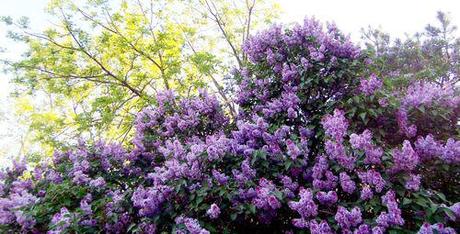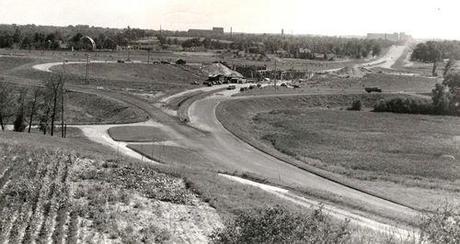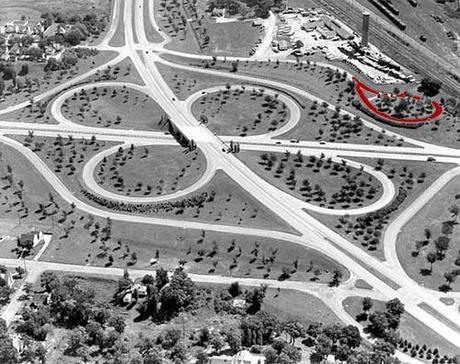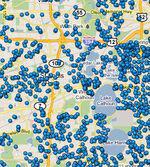Every year when I smell the lilacs in bloom I think back to to the beginnings of Highway 100 and the stretch that was once called 'Lilac Way'... and how in the early days it was even occasionally closed for parades when the lilacs were in bloom!

A fascinating documentary called Highway 100: Lilac Way first aired in 2001, when they were working on updating this old stretch of highway which was very forward-thinking for its time.
I was amazed to learn that work first started on Highway 100 way back in 1933... when it was in the middle of the country. People thought they were nuts to be building such a big highway out in the middle of nowhere but at least it was a way to get people employed. They were just coming out of the Great Depression and one of every three Minnesotans was out of work. Many had been out of work for two years.

The WPA put 600,000 people in Minnesota to work building schools, bridges and public services, but the largest project by far was the Highway 100 project. It was a unique collaboration between the WPA and MN Highway Department, and employed a crew of up to 4,000…it was said that 1,000 men did the work of one bulldozer.
The concept of a four-lane highway around the metro area was a novel one at the time and the brainchild of Carl Graeser, who was to become known as the father of 'the beltway'. His engineering design (including the first cloverleaf in Minnesota) partnered with the work of landscape architect Arthur Nichols (who also designed the grounds of Glensheen mansion in Duluth) to create not just a highway, but a destination with landscaping extraordinary in scope.
The 12.5 mile stretch of highway from Excelsior Boulevard in Edina to Highway 81 in Robbinsdale was built as a rececreational highway, with almost 30,000 trees, shrubs and plants and several roadside parks, most of which no longer exist. People remember having picnics along the highway... Highway 100 was not just a roadway, it was also a destination.

Golden Valley’s official flower was the lilac, and the Golden Valley Garden Club initiated a plan in 1939 to beautify the new highway with flowering lilacs. They sold lilacs for 15 cents each, and raised enough money to purchase almost 8,000 lilacs to incorporate into the plan. People would drive out to cruise the highway when the lilacs were in bloom... and in the early years it was even closed for occasional parades!
The two parks at the north and south ends of the route are still there. Graeser Park pictured below is in Robbinsdale, and was the largest of the parks. I was amazed to find it still there with the distinctive WPA rustic style, although the rock garden was in disrepair and the pools dry. The stones were all hand cut from the Minnesota River banks in Mendota Heights.

The first cloverleaf interchange in Minnesota was at the intersection of Highways 7 and 100, pictured below (facing east). In the top right corner you can see Nordic Ware, which is still there, and outlined in red is a roadside park.

This park, next to Nordic Ware and the Cedar Lake Regional Trail, America's first bicycle freeway, was restored and renamed 'Lilac Park' in 2009. The distinctive 10-foot tall 'beehive' barbecue that was visible for years at the corner of Minnetonka Boulevard and Highway 100 was restored and moved to this location.


Sharlene Hensrud, RE/MAX Results - Email - Golden Valley and St. Louis Park Realtor

